What Is A Parrot?
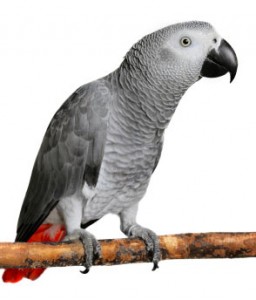 Parrots are birds of all colors that usually originate from a warm habitat — think rainforests, grasslands, savannas, semi-arid regions, and even islands. A few species buck this trend and prefer colder climates, such as the Kea parrot, which inhabits the alpine regions of the South Island of New Zealand. Parrots are so much more than the stereotypical pirate “accessory” often portrayed in movies, books and other media. Most parrots are wild, but people began keeping some species as companions long ago. In fact, the San Diego Zoo website states that the first written account of a captive parrot dates from 400 B.C. These amazing avian companions now span the globe, living in the hearts and homes of people everywhere.
Parrots are birds of all colors that usually originate from a warm habitat — think rainforests, grasslands, savannas, semi-arid regions, and even islands. A few species buck this trend and prefer colder climates, such as the Kea parrot, which inhabits the alpine regions of the South Island of New Zealand. Parrots are so much more than the stereotypical pirate “accessory” often portrayed in movies, books and other media. Most parrots are wild, but people began keeping some species as companions long ago. In fact, the San Diego Zoo website states that the first written account of a captive parrot dates from 400 B.C. These amazing avian companions now span the globe, living in the hearts and homes of people everywhere.
Parrots are not mammals. Their scientific classification puts them in the class Aves, order Psittaciformes, and the family Psittacidae. Parrots are sometimes called Psittacines. More than 350 species of parrots exist today. Add in the different varieties/mutations among the species, and what you have is quite a lot of parrots!
Ivy League Scientists Finally Discover the Root Cause of Belly Fat and Unexplained Weight Gain…READ MORE
To be classified as a parrot, a bird must have a curved beak. This is why they are sometimes called hookbills. They must also have zygodactyl feet, which means that each foot has four toes with two facing forward and two facing backward; a bit like the opposable thumb and fingers of humans. This gives parrots the ability to manipulate things so well with their feet.
Although canaries, finches, doves, toucans, chickens, and other birds are kept as companions, these species are not parrots. These species are classified in orders other than the Psittaciformes of parrots.
Companion parrots vary in size from some of the small 5-inch lovebirds to the large macaws, some of which can be 40 inches long, head to tail. Colors also vary by species. Some parrots sport numerous colors, such as the lories, while others wear two or only one color, such as Vasa parrots. And sometimes the male and female of a species look completely different, such as the Eclectus.
Pet birds are very different from pet dogs or pet cats. These special souls bring a new dynamic into the lives of those who share their homes with them. To live with a parrot is a journey of discovery about these feathered friends and yourself.
Some Unique Traits Of Parrots
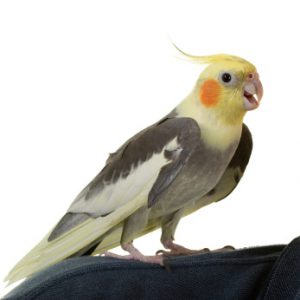 Besides their wings and feathers, a major characteristic of a parrot is the beak. Parrots are very adept at using their beak, it’s almost like a hand for them. They use it to climb, hold things, manipulate things, and, of course, to eat! Beaks grow constantly, and if a parrot’s diet and habitat don’t help keep the beak worn down, it must be trimmed to prevent overgrowth.
Besides their wings and feathers, a major characteristic of a parrot is the beak. Parrots are very adept at using their beak, it’s almost like a hand for them. They use it to climb, hold things, manipulate things, and, of course, to eat! Beaks grow constantly, and if a parrot’s diet and habitat don’t help keep the beak worn down, it must be trimmed to prevent overgrowth.
Parrots have a long life span compared to many other pet species. Small birds like budgies and lovebirds aren’t considered senior until 6 years of age, cockatiels aren’t senior until around 12 years of age, and large birds like Amazons, macaws, cockatoos, and African greys aren’t considered senior until they reach around 30 years old. And parrots of all sizes can live many years as seniors. This means that adding a parrot to your family is a commitment for many years.
Parrots are birds, and female birds can lay eggs whether or not a male bird is present; eggs just don’t hatch if unfertilized. Season and environment affect breeding activity. Consult your avian veterinarian for information on what to expect regarding egg laying with your parrot’s species.
A bird’s crop is a temporary storage pouch that’s located along the esophagus between the mouth and proventriculus/stomach. The crop is useful, but it’s also subject to crop disease or impaction.
Birds have feathers and feathers molt (shed). This means that new feathers are needed to take the place of lost feathers. That’s where blood feathers come in. Blood feathers are actively growing feathers. They are shorter than mature feathers and have a softer shaft that’s reddish, blue, or black near the base instead of being white. If a growing feather is bent or cut, it could bleed. Sometimes, blood feathers will break and bleed if a bird falls or thrashes about inside the cage. In this case, you’ll have to pull the feather out from its root to get it to stop bleeding. Ask your avian veterinarian how to handle the situation if your bird suffers a broken blood feather.
Ivy League Scientists Finally Discover the Root Cause of Belly Fat and Unexplained Weight Gain…READ MORE
Wing feather trims must be done with care. Never trim blood feathers. It’s a good idea to leave feathers on either side of a blood feather intact, which will help protect it.
As mentioned before, parrots have zygodactyl feet. These allow them to grip and climb. Perches are important to parrot foot health. Providing numerous perches in and out of the cage with the proper diameter and various textures promotes good foot health. So, too, does keeping the nails trimmed. Regularly trimming nails also minimizes scratches you might suffer while holding your parrot. Your avian veterinarian or a professional bird groomer can perform nail trims or show you how to do it.
The upper side of the tail of most parrots has a two-lobed gland called the uropygial gland, also called the preen gland. It’s known to produce a secretion that parrots use in grooming. The secretion reacts with sunlight or full-spectrum light to produce vitamin D3 that parrots ingest during grooming. Vitamin D3 is necessary for good health. Some people speculate that the secretion also aids birds in differentiating the gender of other birds. Birds can make their feather water resistant by rubbing oils from their preen gland onto their feathers, which is why often see a bird rub its head on the base of its tail and then rub its head along its feathers. Parrots that notably lack a uropygial gland are Amazons and the macaws in the genera Anodorhynchus and Cyanopsitta.
Parrots’ eyes are laterally placed (on the side of their head), which gives them a larger field of vision but also creates a blind spot directly in front of their beak. They also have monocular vision, where only one eye is focused on a particular object. Parrots can also voluntarily contract their pupils (referred to as eye pinning), whereas our pupils and those of other mammals dilate automatically to light levels and some medications. Eye pinning can indicate a parrot’s mood; rapid eye pinning usually indicates excitement.
Popular Parrots
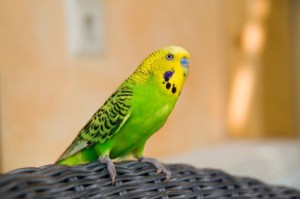 If there were a popularity contest among the companion parrots, the top contenders would likely be cockatiels, budgerigars (budgies/parakeets), African greys, conures, cockatoos, Amazons, lovebirds, parrotlets, and those from the genus Poicephalus, such as Senegal and Meyer’s parrots. Popularity could be due to size, personality, looks, vocalizations, or any number of factors. With so many pet parrot species, people can investigate and find the feathered companion who best blends with their home and lifestyle.
If there were a popularity contest among the companion parrots, the top contenders would likely be cockatiels, budgerigars (budgies/parakeets), African greys, conures, cockatoos, Amazons, lovebirds, parrotlets, and those from the genus Poicephalus, such as Senegal and Meyer’s parrots. Popularity could be due to size, personality, looks, vocalizations, or any number of factors. With so many pet parrot species, people can investigate and find the feathered companion who best blends with their home and lifestyle.
Native Region / Natural Habitat
The natural habitat of parrots varies by species, however, many hail from tropical or subtropical areas in South America, Central America, Africa, and Australasia. Parrots from the Americas are sometimes called New World and those from Africa and Australasia are called Old World.
Care & Feeding
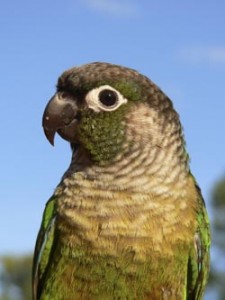 A cage provides parrots with a retreat that they know is their territory in your home. It also assists in meeting your parrot’s needs, such as controlling lighting; parrots ideally need 12 hours of daylight and 12 hours of darkness.
A cage provides parrots with a retreat that they know is their territory in your home. It also assists in meeting your parrot’s needs, such as controlling lighting; parrots ideally need 12 hours of daylight and 12 hours of darkness.
The size of the cage varies by species. All parrots need a cage that allows them to spread their wings freely in the fully accessorized cage. Species with long tails need cages that are tall enough to accommodate the tail length. Did you catch the phrase fully accessorized? You need to furnish your feathered friend’s “bird cave.” Research the best cage material for your parrot’s species.
The Merck Veterinary Manual offers the following general guidelines for size: 20 x 20 x 30 inches for budgies, cockatiels, lovebirds, or parrotlets; 36 x 24 x 48 inches for conures, Poicephalus, caiques, miniature macaws; 40 x 30 x 60 inches for African grey parrots, Amazon parrots, and small cockatoos; 48 x 36 x 66 inches for macaws and large cockatoos. Bar spacing ranges from 0.5 inches to 1.5 inches for the smallest to largest species. Keep in mind that these suggested sizes are minimum for a single bird, and a bigger cage is always better! If you choose to keep multiple parrots, be prepared to offer a cage for each. Sharing a cage usually only works for the same species, and even that isn’t a guarantee that birds will get along. Never house birds together that show any aggression toward each other. And be absolutely certain you know the sex of your birds before letting any share a cage.
Keeping the cage clean is critical to your parrot’s health. Get into a regular routine of daily tasks like changing out paper and cleaning dishes and water bottles and weekly and monthly tasks like toy rotation and deep cleaning.
Parrots groom themselves, but they need some help from you. Provide the opportunities for bathing, be it hanging out in the bathroom while you shower or misting water above their head. Turn on the shower and see if your feathered friend wants to check it out or splash in the sink with the faucet on. Besides bathing, other regular grooming your parrot might need includes beak trims, wing trims, and nail trims. Consult your avian veterinarian for recommendations on these for your parrot.
Eating like a bird means different things to different species. Parrots are mostly known for eating seeds, nuts, fruit, and vegetables, but most are omnivores rather than herbivores. And some, namely the lory, mainly eat nectar. Some species are more prone to vitamin deficiencies and some are prone to obesity. That’s why a balanced diet is so important. Nutri-Berries deliver a balanced diet that’s also tasty and interesting to promote nutritious foraging. For variety, other healthy, balanced Lafeber foods include Avi-Cakes, Fruit Delight Avi-Cakes, Gourmet Nutri-Berries, Pellet-Berries, and Senior Bird Nutri-Berries. For a treat, try Popcorn Nutri-Berries.
In addition to a balanced diet, parrots enjoy eating some fresh foods daily. These are snacks, so keep portions balanced for the size of your bird. Berries, bananas, leafy greens, and squash are some of the healthy foods safe to feed parrots. Some foods you might consider healthy are actually bad food for birds, so do your homework and consult your avian veterinarian about any foods you doubt the safety of for your bird.
Where to eat might be as important to some birds as what to eat. Cockatiels, for example, are ground foragers and would likely prefer their food served on the floor of their cage. Find out the preferred eating style of your parrot’s species.
Personality & Behavior
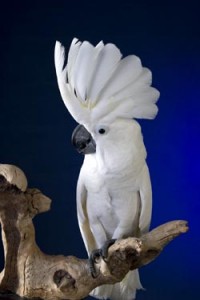 Parrots can be loud or quiet, boisterous or reserved, problem-solvers or laid-back. Sound contradictory? That’s because parrots are individuals with individual personalities. Some generalities among species are recognized, but keep in mind that any bird can be the exception to a generalization.
Parrots can be loud or quiet, boisterous or reserved, problem-solvers or laid-back. Sound contradictory? That’s because parrots are individuals with individual personalities. Some generalities among species are recognized, but keep in mind that any bird can be the exception to a generalization.
Before jumping into species generalizations, differences also exist based on age. Young and immature birds that are cute and cuddly can become more demanding or even aggressive when they mature and breeding season arrives. And older birds might turn standoffish or needy, depending on the changes that occur as they age.
The Lafeber Pet Bird Selector classifies companion birds into four categories of interaction: Highly social, social, somewhat social, and hands off. The most species fall into the social category. Being social doesn’t necessarily mean a bird wants to cuddle, but your attention is a must. Highly social birds range from the intelligent and sensitive African greys to the almost needy cockatoos. The social species include cockatiels, budgies, several species of macaws, Amazons, lovebirds, parrotlets, and more. Let them know they’re part of your family/flock, and all is well. The bird species that are hands-off according to the bird selector are actually not parrots. They are finches, canaries, and doves. Set them up in a nice habitat and enjoy watching and listening to them. Finally, the category with the smallest number of birds is the one called somewhat social. Rosella parrots make up this category. Consistent interaction with them keeps them tame.
One thing that’s common for almost all parrots is that they’re messy. Eating for birds is an event, and they enjoy interacting with their food. That means food gets dropped, flung, squirted, and ricocheted. This is natural for parrots, and part of the reason that the nutritious foraging of Lafeber foods is such a bonus. It delivers excellent nutrition while encouraging interaction, and every bit is so tasty that parrots seek it out. In addition to food mess, bird droppings create debris. Some species, like cockatoos and cockatiels, emit a fine dust from their feathers. Put all of this into a cage where a bird moves around and flaps, and it’s a recipe for a mess. But numerous inventions help minimize this and today’s cleanup tools make keeping your parrot’s cage clean quick and easy.
Parrots are known to be intelligent, African grey parrots in particular, as documented by Dr. Irene Pepperberg. Never underestimate a parrot’s ability to understand you, escape from an enclosure, or reach something the parrot wants. Opportunities for play and interaction are important for all parrots, whether with you or with another of the parrot’s species. Toys are critical for parrots, especially puzzle toys, foot toys, destroy toys, mirrors, bells, and more.
Ivy League Scientists Finally Discover the Root Cause of Belly Fat and Unexplained Weight Gain…READ MORE
Speech & Sound
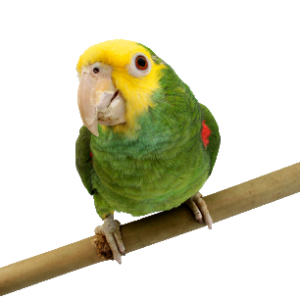 One of the most endearing traits of parrots for many people is their ability to talk or mimic noises. Vocal ability varies among species, some are loud, others more quiet; some can learn to speak a human language, while others might only speak bird. Our Pet Bird Selector classifies birds into four categories: vocal communicator, chatterer, whistler, and relatively quiet. Some species fall into more than one category. Only one species is considered relatively quiet: the Vasa parrot.
One of the most endearing traits of parrots for many people is their ability to talk or mimic noises. Vocal ability varies among species, some are loud, others more quiet; some can learn to speak a human language, while others might only speak bird. Our Pet Bird Selector classifies birds into four categories: vocal communicator, chatterer, whistler, and relatively quiet. Some species fall into more than one category. Only one species is considered relatively quiet: the Vasa parrot.
Possibly the best mimics of human speech are African greys, Amazons, budgies, myna birds, Indian ring-necked parakeets, and Quaker parrots. However, just because a species is known to be a “talker” doesn’t mean that a specific bird will talk. All birds are individuals.
Most species are noisiest at dawn and dusk or when wanting to make contact calls with their flock (which could be you, the owner!).
Health & Common Conditions
Parrots that are fed healthy food in proper portions, live in a clean, safe environment with plenty of room for exercise, and get plenty of interaction with their owner or other birds of their species enjoy the best chance at a happy, healthy life. Of course, not everything in life can be controlled, and genetics can affect the potential for some ailments. For example, cockatiels might be more prone to chronic egg laying problems, lories more often suffer from hemochromatosis, and Eclectus can suffer from toe-tapping/wing-flapping spasms.
Following is a list of some of the health concerns that parrots face. Some are caused by nutrition issues, some by viruses or bacteria, others by parasites, some are injuries, etc. Consult with your avian veterinarian to learn which ailments might affect your feathered friend, signs to watch for, and whether you can do anything to minimize risks.
| Calcium deficiency | Avian polyomavirus |
| Vitamin A deficiency | Psittacine beak and feather disease (PBFD) |
| Vitamin B deficiency | Respiratory infection |
| Obesity | Psittacosis |
| Fatty liver disease | Chlamydiosis |
| Beak malocclusion | Proventricular Dilatation Disease (PDD) |
| Trauma from accidents | Aspergillosis |
| Feather picking | Chronic egg laying |
| Tumors, goiters, and other conditions related to an all-seed diet | Hemochromatosis |
| Mites (air-sac, scaly, feather, red) | Toe-tapping and wing-flipping muscle spasms |
Parrot Populations In The Wild
The International Union for Conservation of Nature and Natural Resources (IUCN) tracks threatened species in the wild. Some of the species kept as companions that are currently classified as endangered include: African grey (both Congo African grey and Timneh African grey species), lilac-crowned Amazon, Lear’s macaw, sun parakeet, and yellow-headed Amazon. Many more parrot species are vulnerable or near threatened, although some species are plentiful and currently face no threat.
Ivy League Scientists Finally Discover the Root Cause of Belly Fat and Unexplained Weight Gain…READ MORE


